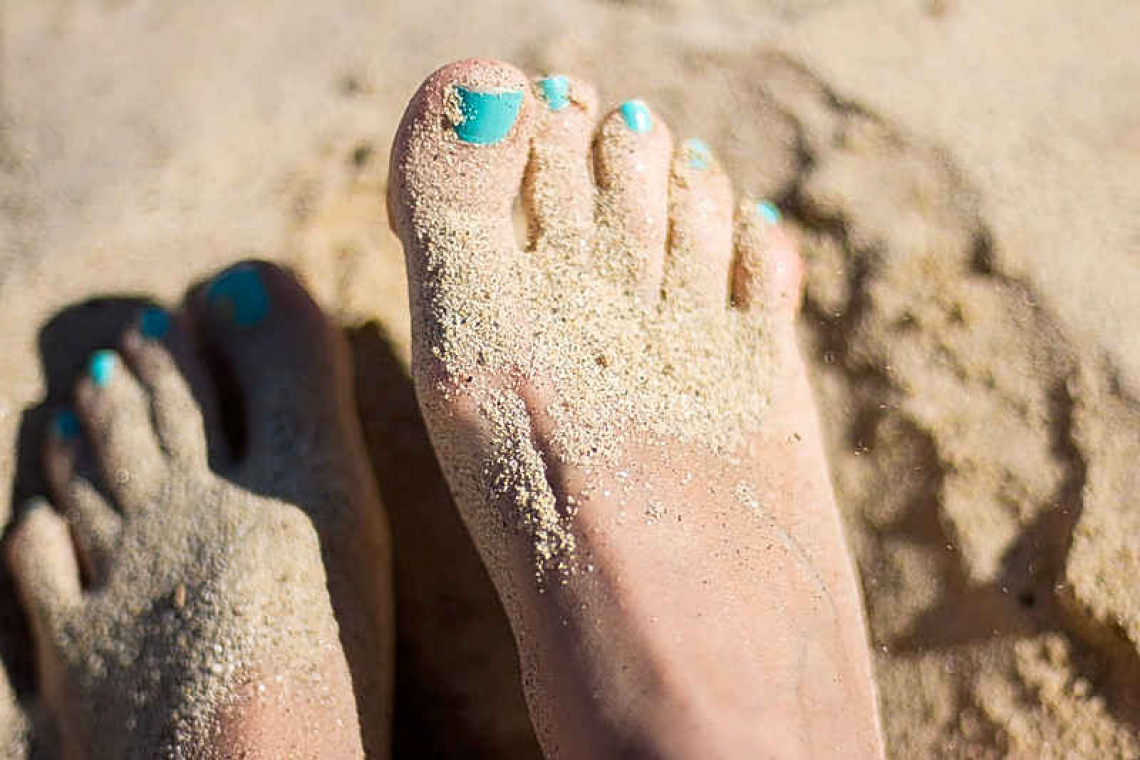By Colin Michie
We are all just majestic, sociable sacs of keratin. Hair, skin and nails are keratin covers for our wonderful innards. This may seem uncomplimentary, particularly when referring to your glowing complexion or lovely eyelashes, but it is also true of beautiful creatures with wool, feathers or slinky furs.
Keratin is a biological plastic made up of layers of water resistant polymers, constructed by skin cells and shed continuously in tiny flakes. As luck would have it, many bugs just love our keratin. Some are large, camping in tunnels they make into our feet, like jigger or chigoe fleas. Vast numbers of mites gratefully live around us in clothes, beds and dwellings, munching on dead skin flakes – the house dust mites.
We should pay particular attention to smaller keratin lovers that we carry within our skins – fungi. Over 40 different types of fungi like to infect just our feet. They are nothing much to look at: their fine fibres infiltrate and dissolve their way into the tough outer layers of our skins. Toe fungi are well-adapted human parasites; they differ from those likely to grow in your scalp, or in the ringworm found on a child’s arm.
Our big toenails are our largest chunks of keratin. They are flexible, grow more slowly than fingernails and contain only about 18% water. This gives them forensic value: most drugs of abuse can be detected in toenails, months later. The Police Force increasingly employs nail clipping analysis as sources of evidence. Exposure to heavy metals in welding, for instance, will cause heavy metals to accumulate in nails. Mercury found in most fishes can be detected in one’s toenails if one eats a great deal of these. Toenails reflect your general health, slowly changing in shape and suppleness as you age, adapting to your nutrition and other skin diseases such as psoriasis. They respond quickly to the trauma of footwear and the fungi that set up their communities there.
The great toenail can grow, painfully, into the flesh alongside it (onchocryptosis). In-grown nails are usually caused by tight footwear or lack of nail care; it is more common in young men. Mild ingrowths can be treated medically; various surgical approaches are effective for more severe or recurrent presentations. If those fungi get busy, they can delay healing of ingrown toenails. The same is true of bunions, also caused by fashionable, snug footwear, including pointy medieval-style slippers!
Fungi vandalise the skin between our toes, disfigure nails and generate foot smells. Fungi that make their home around toenails often cause them to change colour and shape and to become brittle. In extreme conditions, if feet are immersed for long periods, if there is cold injury or other traumas, these fungi and skin bacteria join forces to invade the underlying soft tissues. You may share fungal friends with your family, others at the gym or swimming pool.
Comparing rural and urban communities finds improved foot health in urban families who have clean floors and can wash their feet more frequently. Elderly folk too suffer more frequent toenail damage from fungi. Those with diabetes or sickle cell are more prone to fungal ravages in nailbeds because of poorer immunity, worse circulation and associated nerve damage. Infected nails are often a first step to serious complications that reduce mobility and lead to foot amputation. Global increases in the numbers of diabetics with associated foot problems suggest we all need to start by taking greater care of our keratin.
Traditional approaches enrich toe care in all cultures. If you run barefoot in Anguilla or wear high heels in Paris; whether you are a gangster, house keeper or fisherman, your foot keratin will benefit from protection, washing and disinfection. Adding salt, vinegar, sodium bicarbonate or any one of many disinfectants to foot baths has advantages. Preparations such as castor oil, aloes, coconut oils, camphor, menthol or antifungal creams are useful too, but are unlikely to eradicate fungi from damaged toenails. This requires a long course of prescribed antifungal pills that take several weeks to reach those deeper layers of keratin.
Ensuring your footwear is disinfected does not traumatise your toes; also wearing disinfected footwear in wet public-places limits the opportunities of adventurous fungal clans to colonise and invade your toenails. When cherishing your feet and those of elderly family members, remember those fungi. Nail varnishes, designs and rings can transform your toes into glamourous works of art, but the keratin beneath needs to be in good shape. Strolls on the beach at the wave’s edge, or a foot massage with your favourite balms will keep fungal burdens down and those toenails healthy. Love your toes tenaciously; love your keratin!







